The View from Crystal Bridges
Writer Camille LeFevre offers a dispatch from her recent trip down South to Bentonville, Arkansas, reporting back on the recently opened and oft critically dismissed "Walmart art museum," Crystal Bridges.
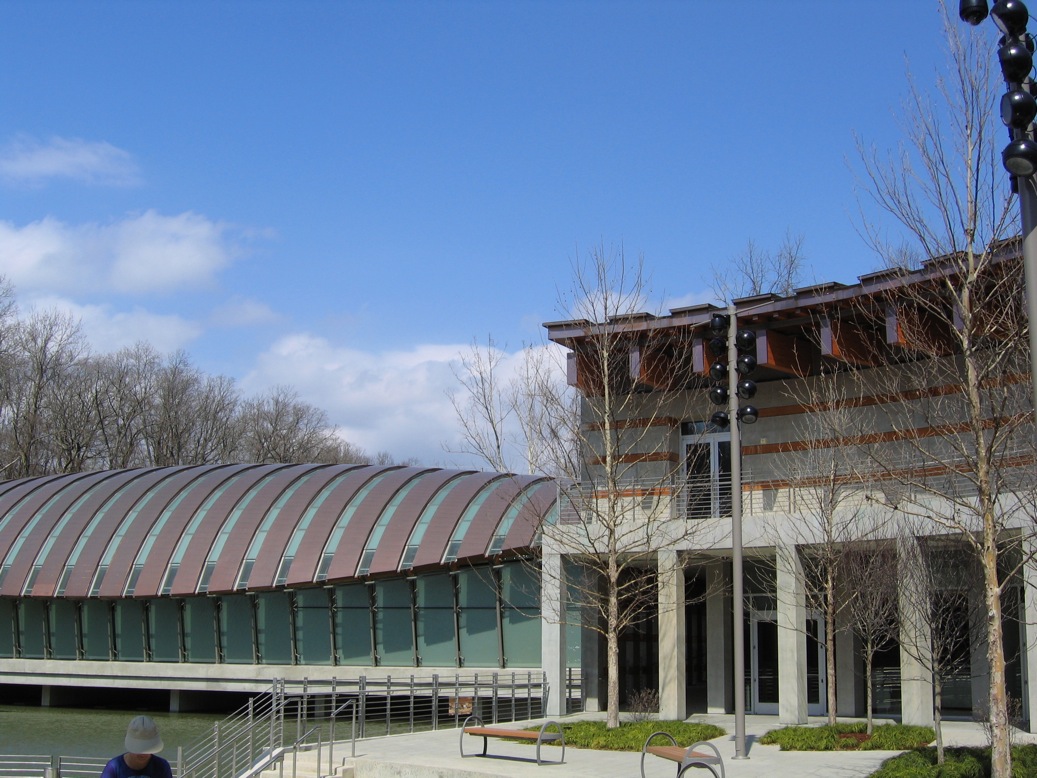
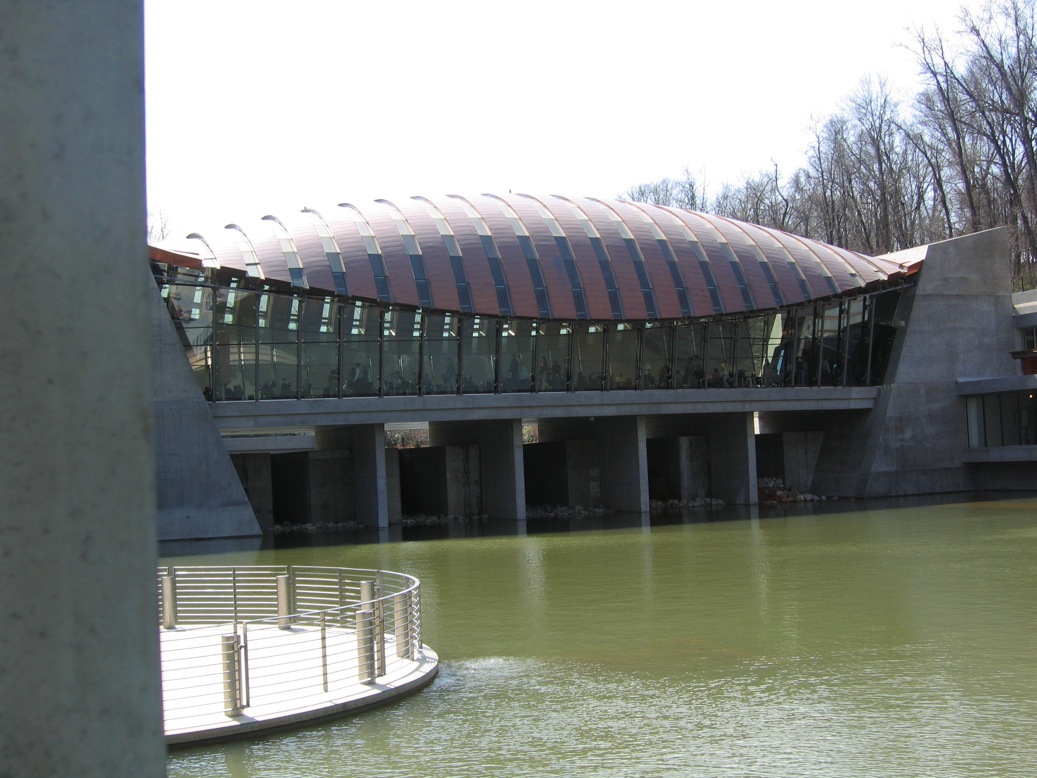
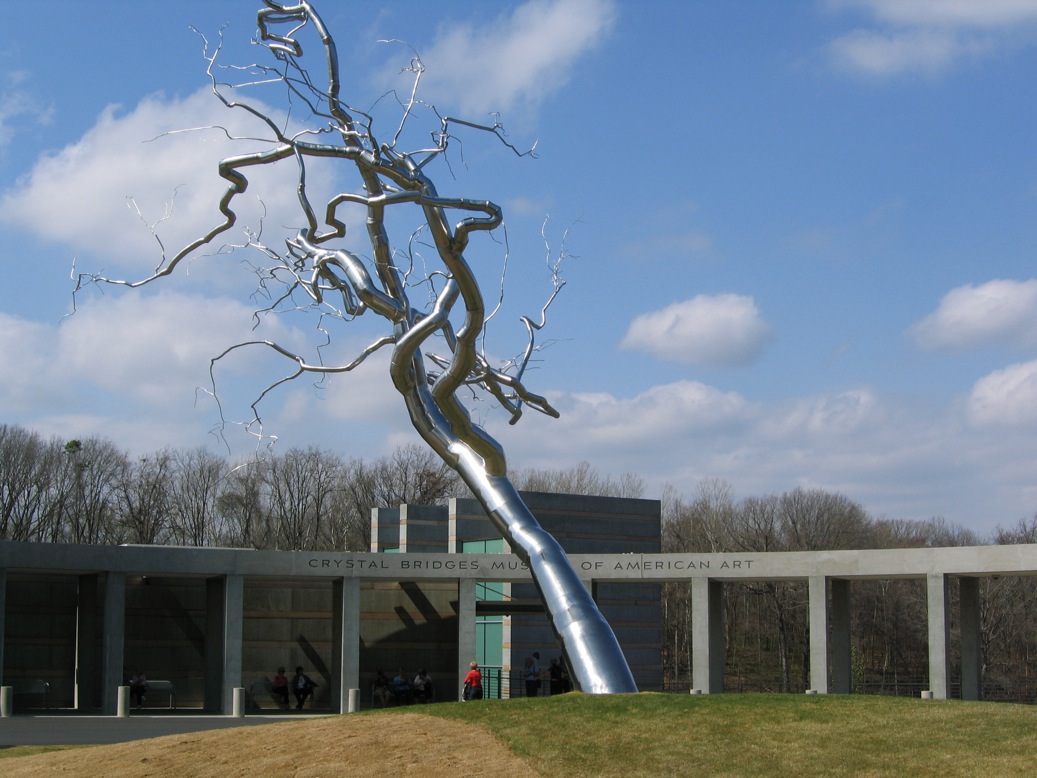
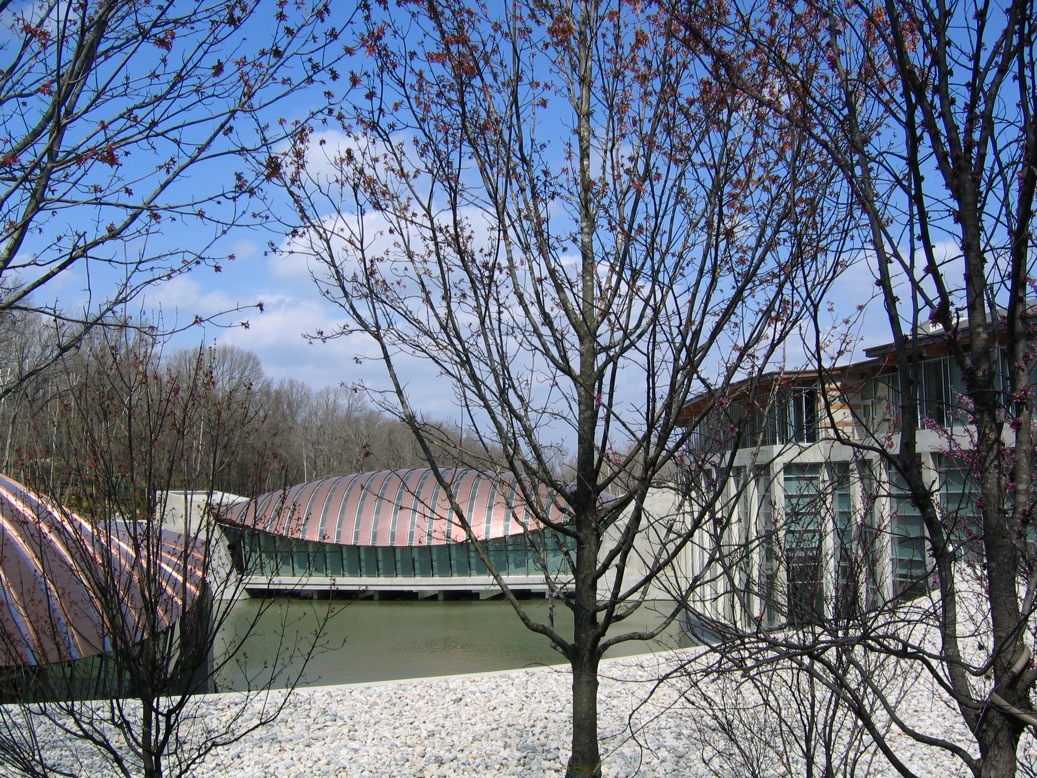
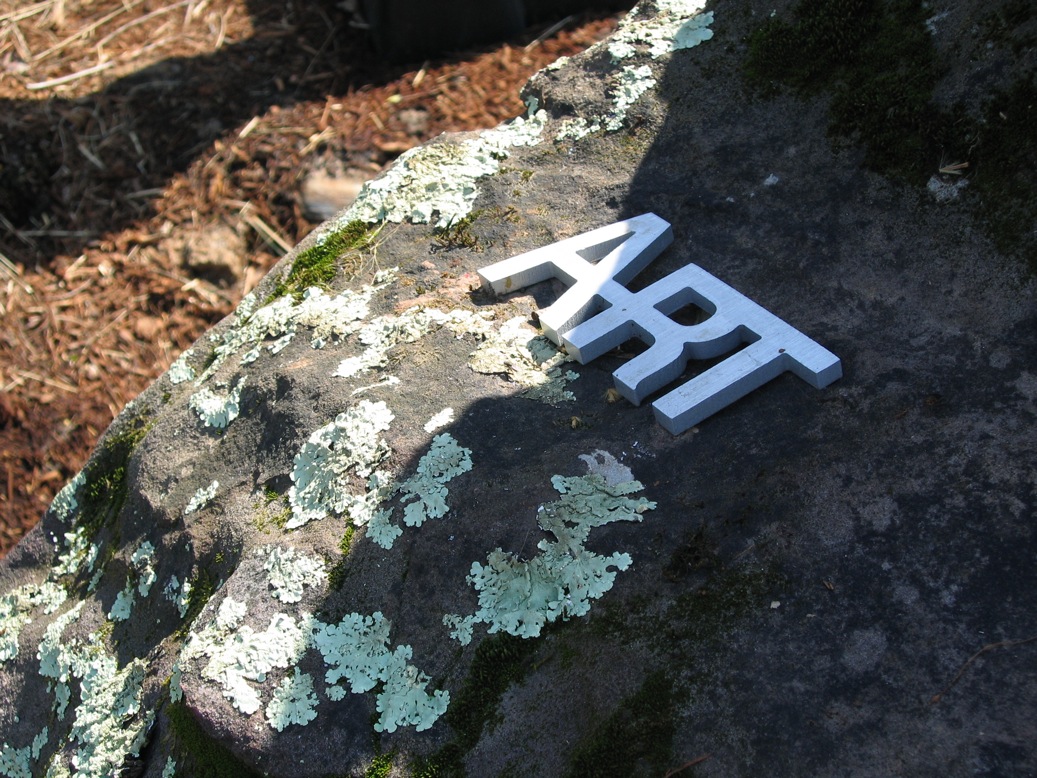
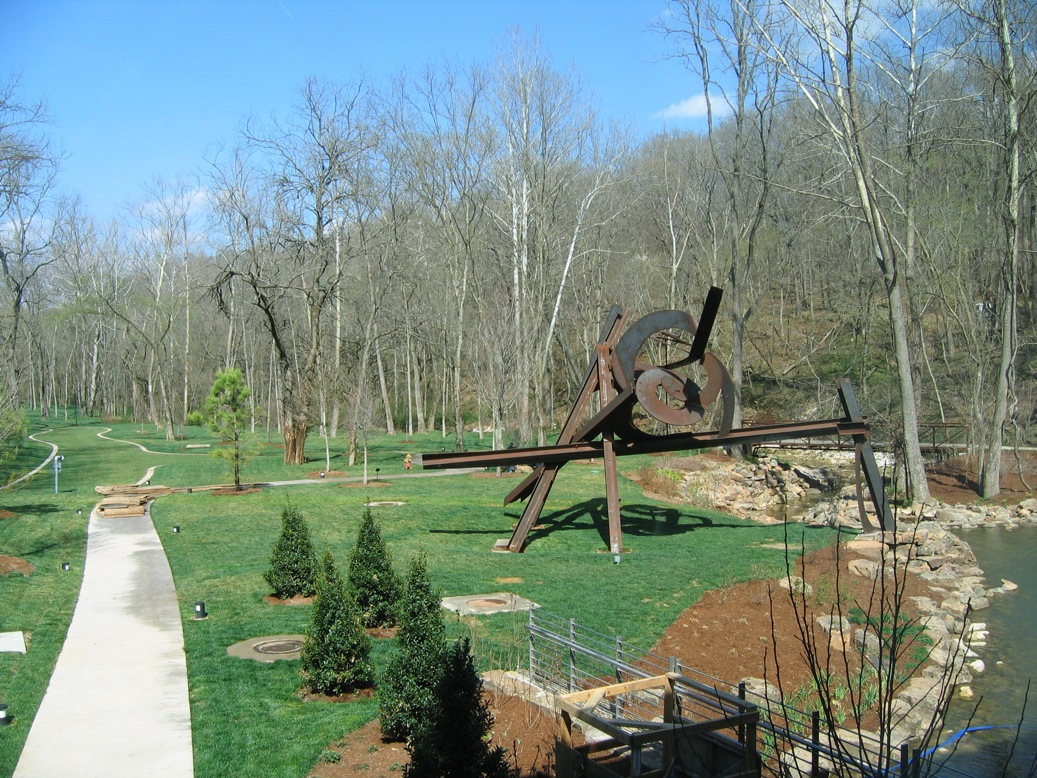
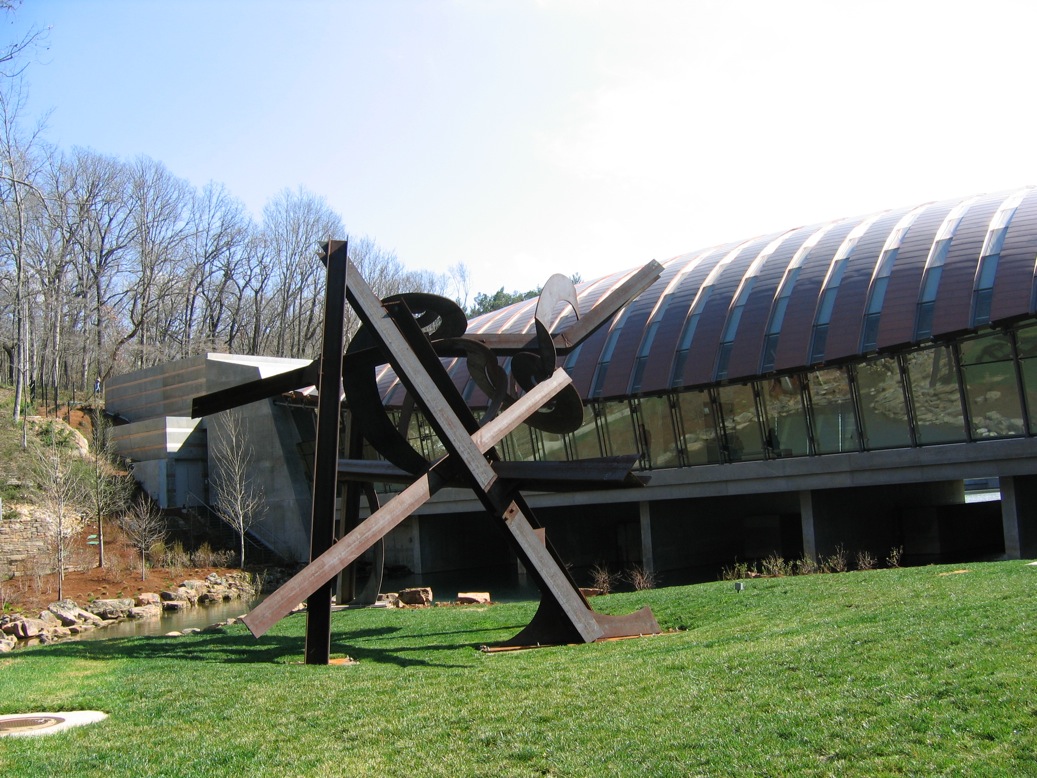
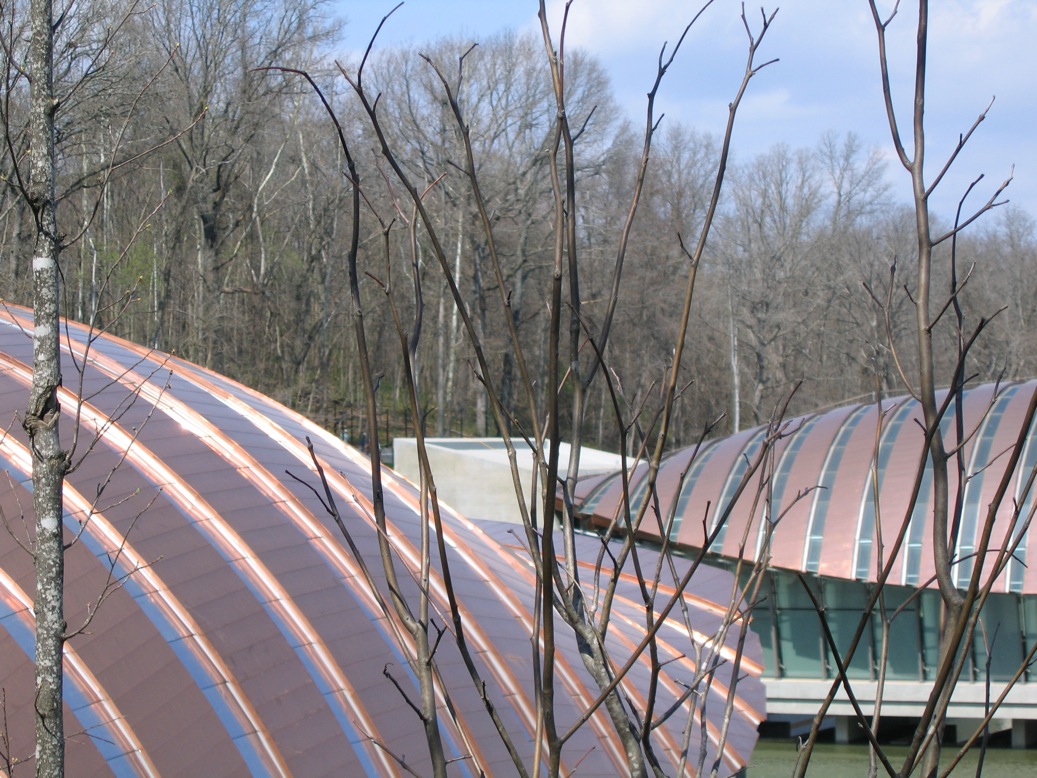
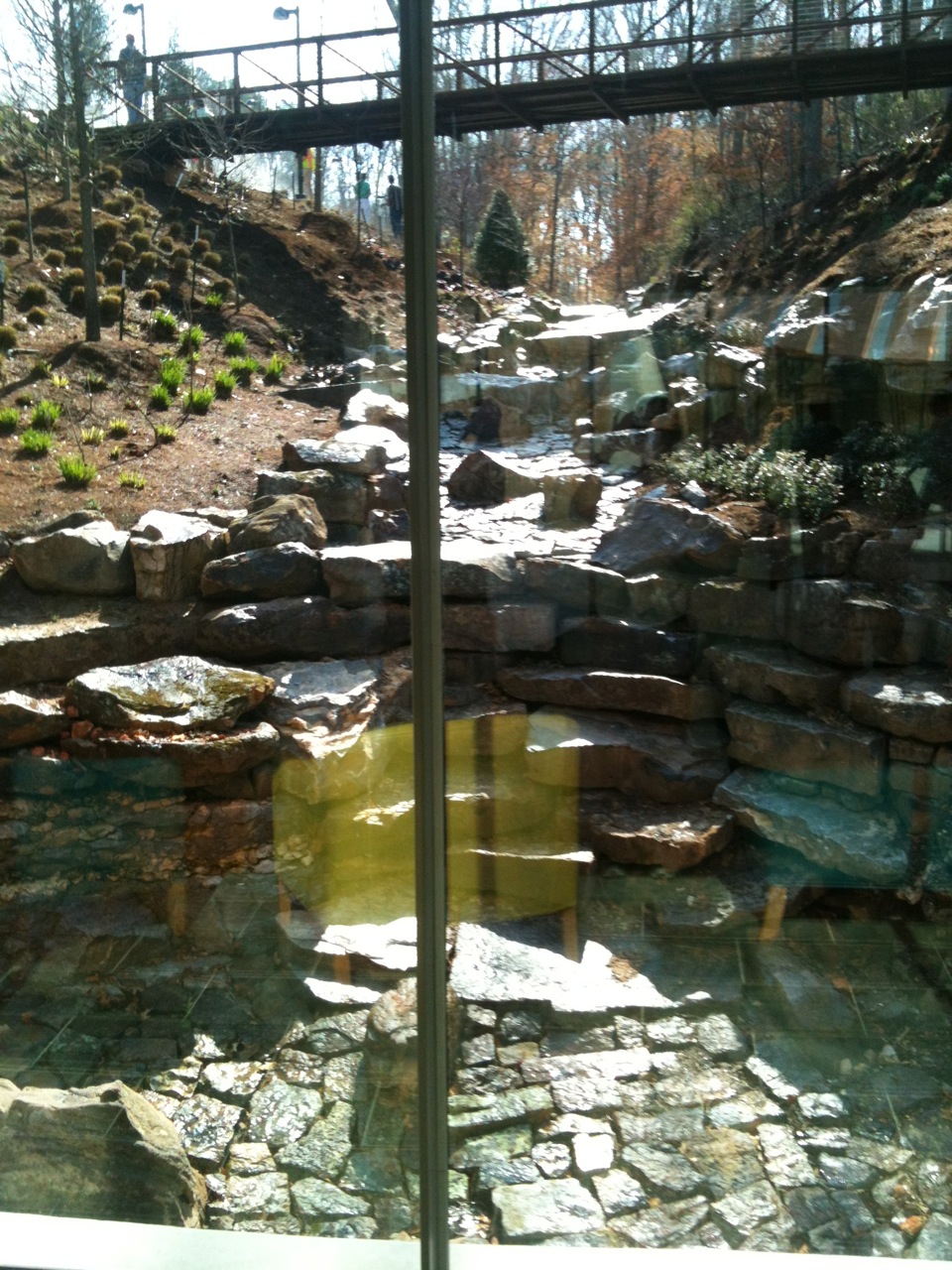
SURPRISES ABOUND ON THE HILLS, IN THE GULLIES and across the streams of Benton County in northwestern Arkansas. Those surprises, uniquely enough, also generate whipsaw-like juxtapositions of the banal and extraordinary and challenge aesthetic compartmentalization and comprehension.
The “town” of Bella Vista, created in 1965 by Cooper Communities, is a good example: It’s comprised of golf courses set across clear-cut valleys, fishing lakes filled by dammed streams, and wood-frame townhouses disintegrating as they slide downhill. On a road winding away from the “town center” (a shopping mall), however, is the Mildred B. Cooper Memorial Chapel (wife of John A. Cooper, Sr., founder of Cooper Communities). The chapel is a transcendent aerie of light and shadow rendered in intricate arcs of wood and sited on a hilltop in the woods by famed architect E. Fay Jones, a student of Frank Lloyd Wright. (Jones’ more-famous, award-winning Thorncrown Chapel is in Eureka Springs).
Ten miles away, in downtown Bentonville, behind the nostalgic toy reproductions in Sam Walton’s first Five and Dime (the one from which his Walmart empire grew), is a down-home corporate museum extolling the virtues of Walton’s philosophy of worker well-being and price affordability for the everyman, which revolutionized global manufacturing, shopping, and spending. Those philosophies may have killed mom-and-pop establishments in downtowns across America, but in Bentonville, the refurbished dime store — across from a town square anchored by a Confederate statue — attracts a steady stream of visitors. Ironically enough, it’s also revitalizing long-empty storefronts on adjacent streets.
Of course, those visitors are also traveling to Bentonville for Crystal Bridges Museum of American Art. The controversial museum created by Alice Walton (Walton’s daughter and the third-richest woman in the world) is situated in a gully on 120 wooded acres, off a straight road that passes by the empty chicken-processing plant and a set of Walmart’s corporate offices (which resemble stacked semi-trailer trucks) on the edge of town. Architect Moshe Safdie designed the 200,000-square-foot museum: an ensemble of stacked pavilions, glass links and copper-clad pods — or “bridges” — on top of concrete infrastructure that dams the formerly free-flowing Crystal Spring into a series of ponds. (Hence, the inspiration for the museum’s otherwise Precious Moments-y name.)
On a warm, muggy March day, my family arrived at Crystal Bridges (after touring Bentonville). At just five minutes past opening time, the museum’s parking lot was nearly full. Busloads of schoolchildren poured through the front doors. Families with kids, elderly couples, middle-agers in wrinkled pants and t-shirts, and well-coifed aesthetes wearing designer clothes and architect glasses filed past the welcome desk. Admission is free (courtesy of Walmart).
What did they and we, see?
“Alice’s Wonderland,” is how The New Yorker described Walton heiress’s legacy, a place wrought from wealth rendered via Chinese manufacturing, American dollars, as much as from water, land, and stone. Crystal Bridges represents the billionaire collector’s vision for her very own art museum – some of the art she purchased by phone while in the saddle, atop one of her cutting horses during a competition in Fort Worth, Texas. The facility sprawls over a series of four progressive galleries that house her purchases of colonial to early 19th-century, late-19th-century, and 20th-century art. The galleries are separated by curved hallways with white walls awaiting further purchases. Walton’s holdings are largely devoid of masterworks, but there is ample representation of work by the masters.
______________________________________________________
“Alice’s Wonderland” is a place wrought from industrial and commercial wealth as much as from water, land, and stone. Crystal Bridges represents a billionaire collector’s vision for her very own art museum.
______________________________________________________
When we visited, the museum was also showing some special exhibitions that, indeed, were remarkable. Tucked away in one small room was a collection of Edward Sheriff Curtis’s hauntingly rendered photogravure of Native Americans, each one from a different band or tribe. At the opposite end of the museum, in a link leading to an event room floating over the pond, was the lively show Wonder World: Nature & Perception in Contemporary Art. On view were two of Nick Cave’s garishly hilarious, object-encrusted “sound suits;” John Baldessari’s gargantuan Beethoven’s Trumpet (with Ear), Opus #132 Reverse, and Karen LaMonte’s exquisite glass Dress Impression with Wrinkled Cowl, among other works.
Throughout the building we found “reflection rooms” with comfy chairs and tables piled high with art books for browsing, and with floor-to-ceiling windows through which visitors could view waterfalls, ponds, streams, and hillsides — all of which are just as curated as the art within the building. A walk around the grounds further emphasized how extensively planned and managed, how deliberately arranged all the elements of the woods around the museum truly are. Blackened areas indicated prescribed burns; tree stumps remaining from prescription cutting were arranged in groups of 3 to 12, inviting multiple sitters. As we wandered the grounds, workmen were redirecting the stream with a bobcat and reinforcing banks with rocks — cutting off pedestrian access to some of the outdoor sculpture. Gravel paths wound through the woods and were being used by joggers and walkers. Two young women and a baby played in a gentle waterfall constructed of comfortably flat rock ledges for sitting and toe dipping.
Clearly, between the free admission and welcoming landscape, the Crystal Bridges museum and site are quickly entering the public consciousness of northwest Arkansas residents. Here is art, architecture, and carefully designed landscape — free to enjoy and appreciate. And who could find fault with that?
In fact, plenty can and have. Walton’s democratization of architectural appreciation and the art-viewing experience doesn’t sit well with everyone. The art establishments on both coasts — while Walton was planning the museum and purchasing its holdings — dismissed her vision, the museum’s low-brow location and provenance, and its surrounding community’s ability to appreciate the art or the architecture. And frankly, it’s so easy (too easy) to be skeptical, even cynical about what a member of the 1 percent says she thinks she’s accomplished on behalf of the other 99 percent.
So, I asked some of them. “What do you think of this museum?” I asked a young woman, with whom I struck up a conversation. “Oh, it’s just another Walton thing,” she said with a wave of her hand.
Then I asked her mother: “Well, but the area has changed so much, hasn’t it, because of the museum? Bentonville has cleaned up so much in the past five years, yes?” To which the mother responded, forcefully, “Oh, yes, of course. There are so many more jobs, so much more development. It’s really good for the community.”
We chatted some more about Bentonville, particularly the 21c Museum Hotel under construction across from the town square, which will also exhibit art and provide rooms for visitors at rates far beyond what the local Bentonvillian can afford. Even so, it’s the Bilbao effect all over again, Bentonville style. And what did they think about the art? The mother and daughter said they sought out the high-profile, big-ticket items: Norman Rockwell’s Rosie the Riveter and Asher Durand’s Kindred Spirits, for which Walton purportedly paid $35 million.
I myself went in search of a Pollock, but found only the early and Picasso-esque Reclining Woman and two small screenprints. But I also found Janet Sobel’s kinetic drip paintings — supposedly the inspiration for Pollock’s action paintings. I saw a sculpture by John Cage, of all things, comprised of plexiglass sheets festooned with words and wryly titled Not Wanting to Say Anything about Marcel. A Joseph Cornell box, The Birth of the Nuclear Atom, was a fascinating assemblage.
Wisconsin painter Tom Uttech’s Enassamishhinjijweian, however, brought me up short: a bear sits with her back to us, as if surveying her domain — a spare landscape without many trees or foliage, yet alive with precisely detailed birds, shown in full flight and all migrating in the same direction; only one small owl gazes back at the viewer. (This is also a picture Crystal Bridges often uses in its print ads.)
Ostensibly, the bear represents us, in the embrace of the American landscape. But, inescapably, the bear is also Walton, serenely at the center of an avian storm: art captured, curated, and in flight, on its way to a destination now known.
______________________________________________________
About the author: Camille LeFevre is an arts journalist, and teaches arts journalism at the University of Minnesota.